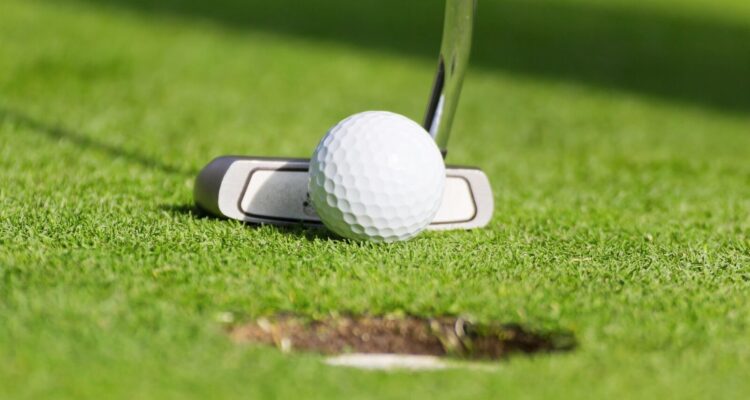The principles of golf are the same for amateur and professional golfers, despite the game’s seeming easiness. The professionals have mastered improving their accuracy and yardage with time. It would appear from watching the PGA (Professional Golfers Association) tournaments that professional players are impervious to error. That is where you are wrong. Even experts can make a slew of common mistakes.
One of the most complicated sports, golf offers a virtually limitless amount of opportunities for mistakes. However, amateurs frequently make crucial mistakes that you can avoid with more sensible consideration. Here are some golf equipment mistakes that you should be aware of while getting yourself into a golf club.
1. Using Excessively Long Irons
The irons in your set with the lowest lofts are known as long irons because of their longer lengths. Many people might define that as a 4-, 3-, or even 2-iron.
Usually, golfers’ equipment sets have included these low-lofted irons as a standard component. That’s the way things have always been. Even though their use is declining, long irons are still often employed on the PGA Tour, but they’re far less frequent on the LPGA Tour.
Compared to long irons, hybrids and fairway woods with high lofts frequently offer more forgiveness, distance, and height. However, some novices are still hesitant to give them a shot. When questioned about long irons against fairway woods or hybrids, the LPGA professionals had the following to say that it’s extremely simple to hit it out of the tough. Thus, it somewhat depends. A 4-iron is ideal while playing a links course. You need a great club to get out of the rough. It’s also very versatile. You may shape it and hit it high or low. Since it’s so simple, it’s like tricking.
2. Choosing the Wrong Clubs
This is perhaps the greatest mistake beginner golfers make before ever swinging a club, and it makes complete sense. The equipment aspect of golf can be difficult to understand if you’re a beginner.
In all likelihood, you won’t get adjusted for a full set of clubs before you’ve played the sport. But eventually, and we advise doing so as soon as possible, you should get adjusted to a set of clubs that are appropriate for your swing. You are allowed to criticize your tools in this game. So, visit the pro shop or the instructor at your nearby driving range to get things started. Simultaneously look up golf reviews from the PGA and LPGA (Ladies Professional Golf Association) pro golfers to choose the right golfing tools for yourself.
3. Forgetting the Perfect Golf Ball
The golf ball is one of the most underrated components of the equation for shooting your greatest scores, although it is the only piece of equipment that golfers use on each shot. Distinct golf balls are made with different performance goals in mind. Finding the ideal combination for your game out of height, spin, speed, and feel is key.
The golf ball design you select can affect your performance, therefore it’s worth the time and experimentation it may take.
Finding the right golf ball for you requires testing eight different models over “a couple of weeks.” During range testing, it’s important to identify the ball that will result in the most reliable distance and dispersion averages, and during on-course testing, the ball that will be the most wind-stable. Outside of the conventional “greater distance” and “more greenside spin” objectives, these are the two things to keep in mind when looking for the go-to golf ball.
4. Having a Tight Grip on the Club
A golf grip is pretty much self-explanatory and straightforward, yet the way we hold the club is the root of so many of our golf problems. Too tight or too loose? The latter is typically difficult for beginners, frequently due to strain. You lose strength and fluidity since it is difficult to perform a full shoulder rotation in this situation. Assume you are guiding a young child across the street. To avoid hurting them, you should grip their hand firmly but not too tightly.
5. Misguarding Your Ball
You make a poor tee shot and turn to the skies for guidance. Your ball is currently deep in the woods. You ask, “Anyone notice where I ended up?” The group usually had one watchful member who kept an eye on things. It is better not to depend on that guy.
6. Not Getting the Good Grips
The only part of the golf club that touches you is the grips. If yours are worn, your tension will increase and you’ll lose power and fluidity. Give your grips a good wash and scrub if they’re starting to feel a little worn but you don’t want or need to change them just yet. Replace them if they still don’t feel right after a thorough wash; you’ll see a significant improvement.
7. Not Getting Properly Fitted Equipment
With so many alternatives available on the equipment market and so many ways to buy them, including retail stores, third-party websites, and even online networks, it can be simple to just buy what appeals to you.
The best course of action for beginners is to be fitted. This is crucial because you don’t want to just walk into any store and buy whichever golf equipment you believe would work best for your game. Novices must remember to get it adjusted to their preferences, the shaft stiffness, the loft, etc.
8. Not Cleaning Up The Golf Bag
Get rid of the yardage book from a vacation you took with several friends in the past; it’s now mulch. Alfalfa sprouts are probably growing on the old towel. gloves, each with a hole in them. Of course, there are also a ton of poor, bruised balls. So, what do you do? You make an effort to get all the filth removed. It’s time to get organized by cleaning, wiping, and sorting every single content of your golf bag.
To Conclude
Finding the ideal equipment is simply the beginning of a lifelong quest for progress in golf. Naturally, the latest technique will be very helpful in that regard, but you still need to practice regularly and invest the time to improve your golfing skills. And as you progress, you may need to upgrade your tools too. And with more practice, you’ll hopefully have better knowledge about your own golfing requirements. Good luck.



